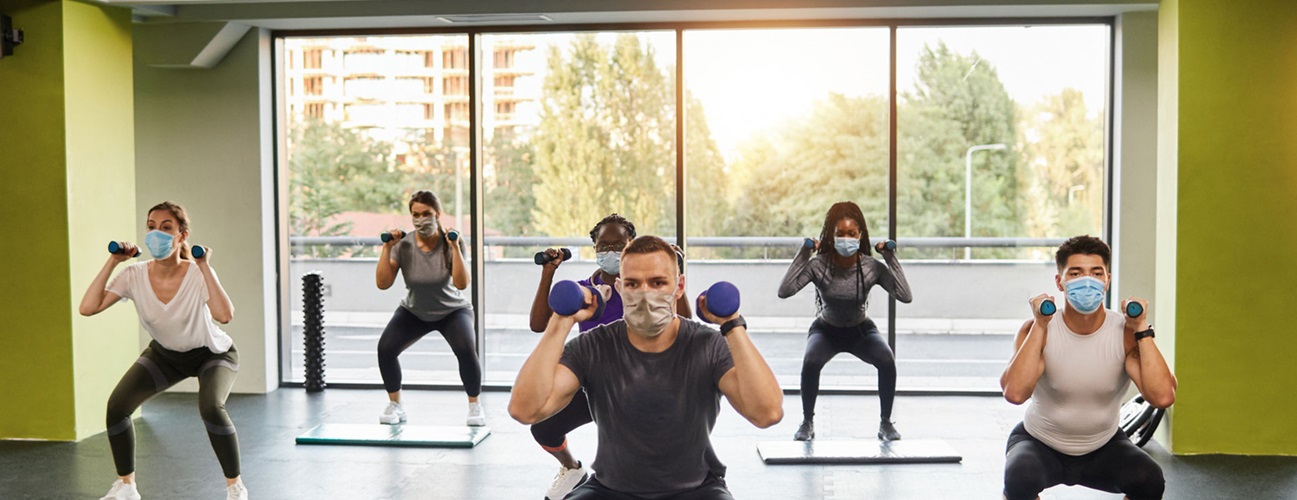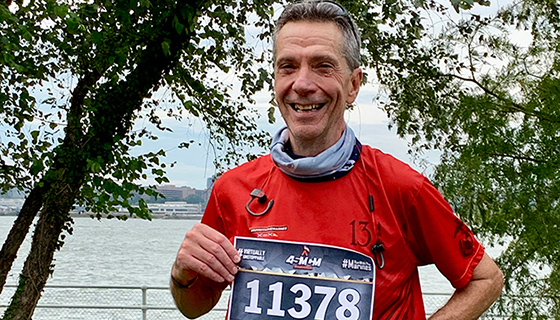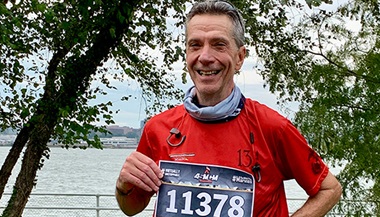Getting Back to Exercise Safely After Pandemic Lockdown
Featured Experts:
The COVID-19 pandemic forced many people to delay participation in sports and other physical activities. The shutdown of schools, gyms and recreation programs, coupled with the restrictions in public spaces, kept people from being active in ways that offer physical and mental well-being.
As you return to public spaces, keep in mind infection prevention guidelines to protect yourself and others. These guidelines include practicing physical distancing, washing your hands, avoiding touching your face and wearing a mask. Johns Hopkins board-certified sports physical therapy specialist John Dale and board-certified orthopaedic physical therapy specialist Ryan Cummings answer common questions about how to safely get back into your normal sport or workout routine.
Why is it important to ease into a sport or an exercise program after a break?
The safest thing you can do after a long break in working out or playing sports is to start slowly and gradually build your body’s exercise tolerance back up.
“The more you compete or perform an activity, the more your body becomes accustomed to it,” says Dale. “When you stop doing that activity, your body doesn’t stay at that level because you’re not using it the same way. Jumping right back into an activity you haven’t done in a while and expecting to pick up where you left off may lead to unwanted aches and pains.”
Taking things slowly when resuming your routines can also ensure that you have the proper techniques down before ramping up again.
What are some ways to ramp up activity safely?
Depending on your physical activity of choice, ways to ramp it up safely may vary:
- Runners can start with a walk-to-run program. As you feel more comfortable walking for a longer time or distance, take minutes away from the walk and add it to the run.
- Weightlifters should start out with lighter weights. As you increase the weight, you can decrease the number of repetitions. Your progress can be marked by how comfortably you’re able to increase the weight or number of repetitions.
- To avoid overuse and stress, alternate activities during your workout that engage different parts of the body.
Your body needs time to get used to a particular activity or intensity level. When you perform an activity, your body will respond either positively or negatively. “A negative response would be pain from doing too much too soon. But if you work on those progressions, such as turning a walk into a jog and then into a run, it becomes easier over time to run longer without pain or discomfort,” says Dale.
What are some workout injuries or pains to watch for when you return to a sport or activity, after a period of inactivity?
Typically, people who don’t ease back into their activity regime will deal with aches and pains, instead of structural damage (injuries) to their body.
Some common pains and strains include:
- General muscle soreness
- Shoulder pain
- Knee pain
- Back of the ankle (Achilles tendon) pain
- Bottom of the foot/plantar fascia pain
- Hamstring strains
When these instances of pain happen, it’s vital to give yourself time to recover before resuming your activities. “Muscle fatigue and soreness after a period of inactivity might last longer than the typical 24- to 48-hour recovery time after a workout,” says Cummings.
If other symptoms are present in the area you are experiencing pain, such as swelling or bruising, you should follow up with your doctor.
If you kept a workout routine at home, should you still take precautions when getting back to the gym or organized sport?
If your activity or routine is even slightly different in a new environment, the rule remains to start slowly and less intensely, before ramping it up.
“If you used to bench-press at the gym, then went to pushups at home every day during the pandemic, you may feel that you’re doing the same movements and working the same muscle groups,” says Cummings. “But the movement in doing those lifts isn’t the same, so the expectation should be lowered because your capacity for the new activity will be different.”
What else should I keep in mind when getting back into working out or sports?
Warm up and cool down
Proper stretching, plyometrics, such as jumping exercises, walking or light jogging before and after your activity can allow your body to properly warm up and cool down.
Pace yourself and your goals
You might have a fitness goal in mind when you get back to your routine. But you may find it difficult to achieve initially. Set smaller goals to get to larger goals. For example, if you’re training for a marathon, start with a goal to successfully run a 5K or half-marathon.
Listen to your body
It’s also important to understand that your body will respond differently each day. “Every day is going to be different,” says Cummings. “You’re going to lift more weight one day, but you may not be able to do the same lift the next day. There are peaks and valleys in getting back to a certain level of activity.”
If an activity or movement doesn’t feel comfortable, consult your physician an orthopaedic doctor or a physical therapist immediately.
“There’s a difference between pain and discomfort,” says Dale. “Is it difficult or uncomfortable from a strength or cardiovascular standpoint? Or, are you developing pain in your shoulder or knee that is limiting function? The line between discomfort, pain and injury can sometimes be blurred in these situations and will be unique to each person.”
“Just do what feels good for you,” adds Cummings. “Listen to your body, and if it’s too easy the first time, make it harder the next.”
Take a day (or more) off
“It’s ok to have rest days,” says Cummings. “It’s good to exercise, but you need to have a day where your body can recover. If you do an activity seven days a week, there’s no opportunity for the body to recover from the stresses you put on it; ultimately, that can lead to overuse or injury.”
Be mindful of breathing
Practice diaphragmatic breathing, which is breathing with your belly instead your chest.
“Place one hand on your chest and one hand on your belly. Your belly should be the one that rises and moves,” explains Cummings. “This allows more of a deep breath, versus when you breathe with your shoulders, and is the best way to achieve greater volume of inhalation and exhalation.”
This technique, which can be practiced both during workouts and in general settings, helps to relax and calm you during times of high stress or pressure.
If I’ve had COVID-19, what should I consider when returning to sport/activity?
The effects of COVID-19 are different for everyone, so you should consult your physician before resuming sports or fitness activities. Your physician will be able to determine if your activity plans pose any risks, in light of your prior COVID-19 diagnosis.
The best steps to take to resume activity if you’ve previously had COVID-19 are:
- Wait at least a week with no symptoms to return to sports or fitness activity.
- Start with light activity, such as a daily 15 – to 30-minute walk.
- Slowly ramp up your regimen over the days and/or weeks that follow.
- Stop your activity, and consult your physician if you experience returning symptoms, such as shortness of breath, chest pains, lightheadedness or heart palpitations.
It’s vital to take every precaution you can while returning to sport and activity. Remember that patience is key, as you work yourself back into your routine.








